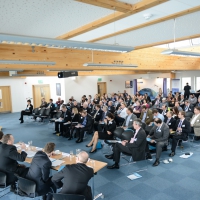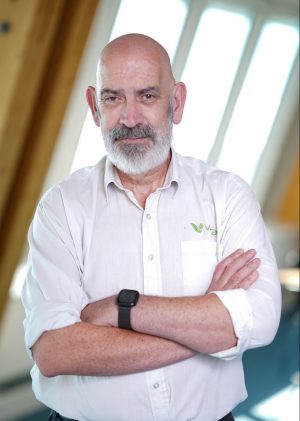Britain will only unlock the benefits of net zero by 2050 in an affordable and secure way if bold and sustained action on clean energy is taken now and beyond 2030, according to a new report by the National Energy System Operator (NESO).
NESO’s first ‘Future Energy Scenarios: Pathways to Net Zero 2025’ (FES 2025) report shows Britain needs to accelerate progress on delivering clean electricity, bioenergy, hydrogen and clean energy storage.
It also says more needs to be done to empower households and businesses to switch to low-carbon heating and adopt effective energy efficiency measures.
FES 2025 shows electricity demand could rise nearly threefold from 290TWh today to between 705TWh and 797TWh in 2050, becoming the main source of clean energy.
It examines the choices facing government, industry and households and considers three net-zero pathways with varying levels of electrification, hydrogen, bioenergy and consumer engagement.
NESO’s independent analysis predicts annual emissions could halve to around 200 megatonnes of carbon dioxide a year during the course of the next decade. However, this will only be possible by accelerating the mainstream use of low-carbon technologies across all sectors of the economy – from industry through to homes and transport, the report says.
If the right infrastructure is in place at the right time, then emissions could be cut by as much as three quarters to around 100 megatonnes of carbon dioxide a year by 2040.
Britain is expected to have new energy infrastructure, including wind and solar, that will boost the total amount of power available on the grid threefold by 2050. This includes between 98TWh and 328TWh of hydrogen powering the network by the middle of the century.
The single biggest source of flexibility across supply and demand, providing 51GW at peak, will come from electric vehicles.
NESO chief executive Fintan Slye said: “Over the past year, we have run the electricity system at 95% zero-carbon for the first time and phased out coal entirely from our energy system. But this isn’t enough. We need to go further and faster, accelerating the roll-out of clean energy technologies is imperative to help deliver a clean and affordable energy system in the long-term.
“The choices made today will shape the success of each wave of Britain’s transition. That means speeding up the adoption of energy efficiency measures, empowering households and businesses to make informed choices on things like demand flexibility, purchasing an electric car and switching to low-carbon heating.”
FES 2025 says Britain’s carbon neutral journey has four key waves. With the initial foundation wave having been laid for the transition, Britain is now on the second – accelerating and scaling up the markets up to 2030, for the uptake of new low-carbon technologies to deliver clean power. Only once this succeeds can Britain then enter the third and fourth waves of growth and completion to secure net zero by 2050, the report says.
The report also calls for various measures to be prioritised to ensure Britain meets net zero by 2050 in an affordable and secure way. These measures include building infrastructure for electricity, gas, hydrogen and carbon capture at pace; accelerating widespread energy efficiency measures, innovative tariffs and demand flexibility to save money for consumers; and incentivising the decarbonisation of industry by switching to low-carbon fuels and carbon capture and storage.
This year’s FES comes after a year of significant policy changes by the UK Government, including lifting the offshore wind ban, bringing forward the ban on petrol and diesel cars to 2030, the Clean Power Action Plan and the start of NESO’s connections reform – supporting the once-in-a-generation expansion of Britain’s clean electricity network.
FES 2025 complements NESO’s Strategic Spatial Energy Plan (SSEP) and the Regional Energy Strategic Plan (RESP), supporting the development of advice on onshore electricity, gas and hydrogen infrastructure for Great Britain up to the middle of the century.
Source: reNEWS.BIZ













